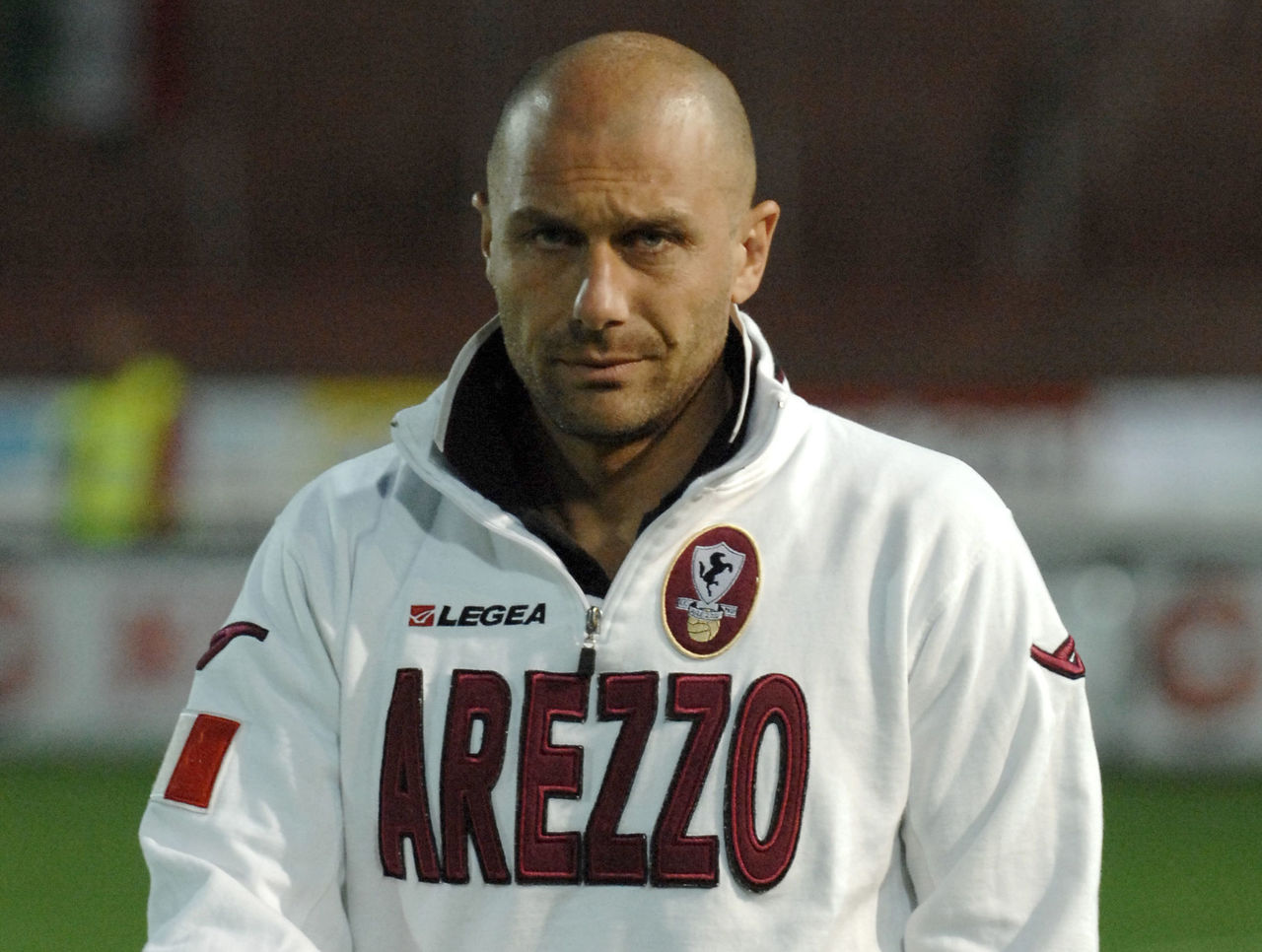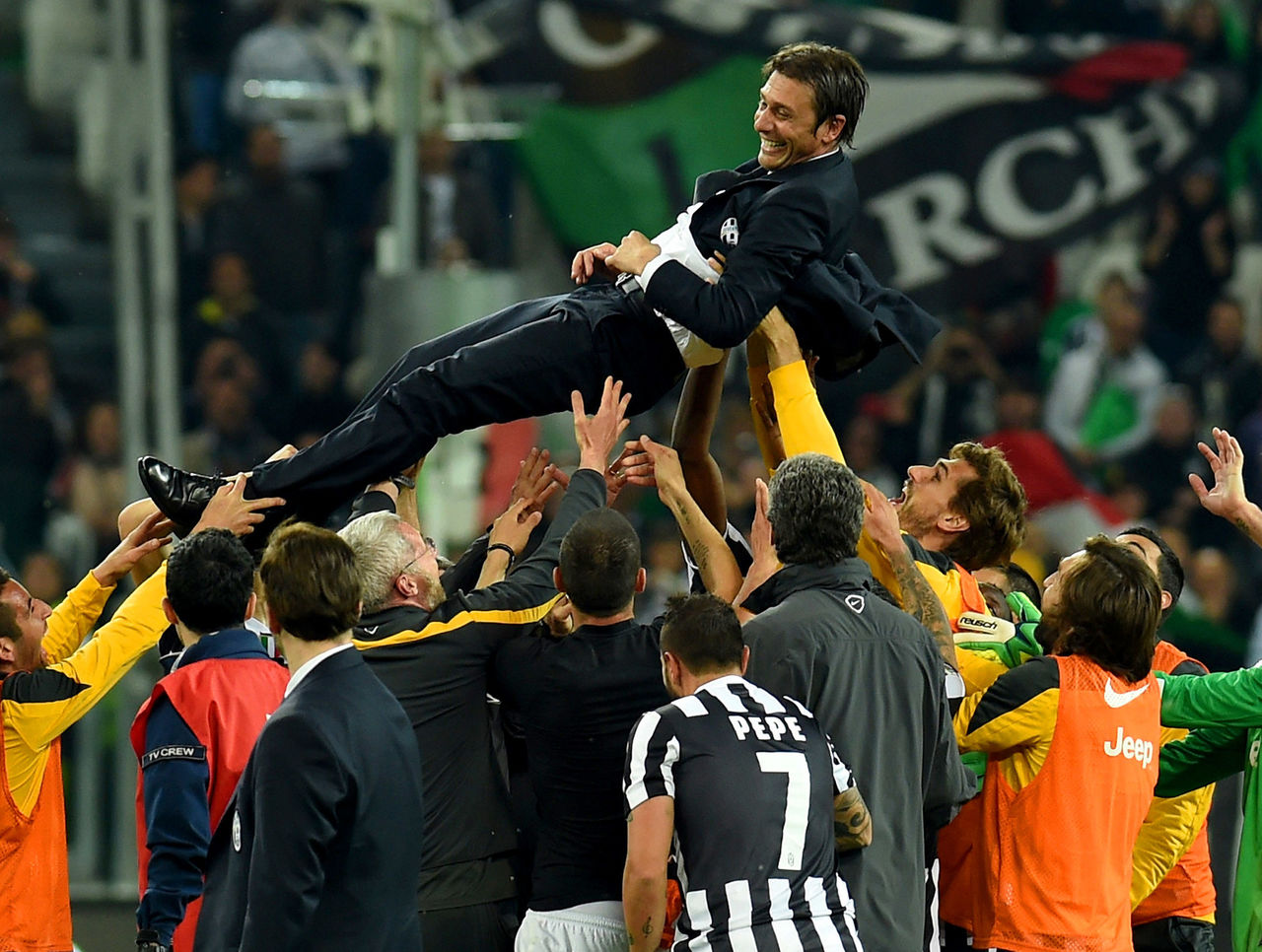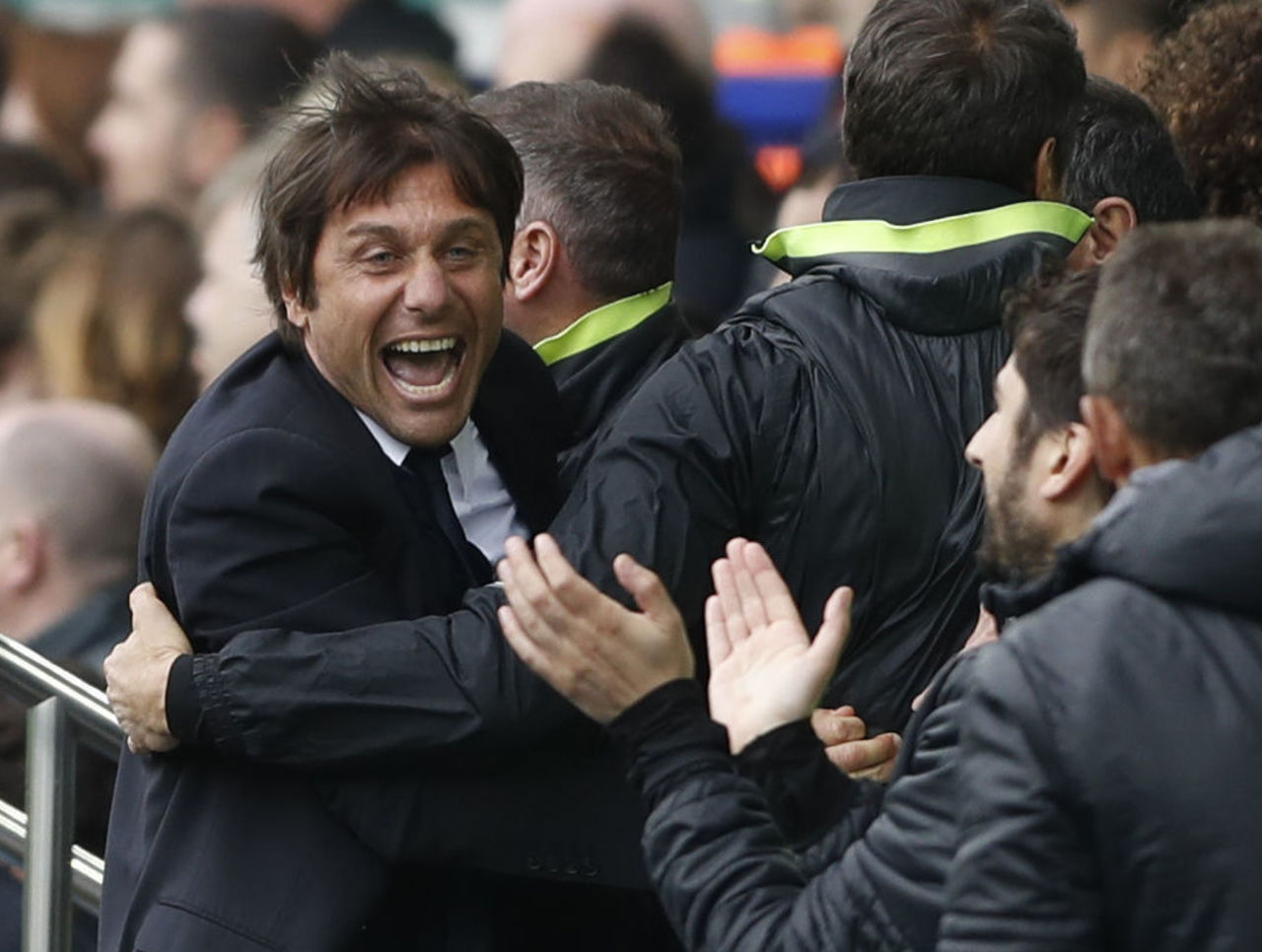From Arezzo to Chelsea: How Conte became a managerial mastermind
Apart from the signings of N'Golo Kante, David Luiz, and Marcos Alonso, Chelsea changed few personnel in the aftermath of its horrible title defence. Instead, the club focused most of its energy on recruiting Antonio Conte, and it's the Italian who made the biggest difference in west London.
Related - Back on top: Chelsea clinches 2nd Premier League title in 3 seasons
More than a decade since he made his managerial debut in a small town in Tuscany, Conte realised his greatest achievement to date by winning the most prestigious league in world football. He can now be regarded as one of the game's most flexible tacticians and emotionally invested pitchside leaders.
Here's a look at his steps to reaching the pinnacle of English football:
Arezzo (2006-07)

After serving as an assistant at Siena, which he would later coach, Conte took the job in the relatively modest confines of Arezzo, which never before played in Serie A.
The 2006-07 season was a difficult one. Caught in the tangled web that was Calciopoli, the match-fixing scandal that forced Juventus to join Arezzo in Serie B, the Tuscan side had the disadvantage of a six-point penalty. Conte was fired in October 2006 following a string of unconvincing results, but in a typical Italian move, was rehired in March 2007.
"When he came (the) first time he was thinking as an ex-player. When he came back he was thinking like a coach," Arezzo's longtime kit man, Giovanni Sarrini, told The Telegraph's Sam Wallace. "He was a strong character, he was hard on the players. He showed his balls."
Despite winning 22 points in Arezzo's last eight matches, Conte couldn't prevent relegation to the third tier. Without the penalty, the club would've finished 11th. But it was a year that shaped the tenacious Conte we see now.
Bari (2007-09)
Conte kept Bari in Serie B after replacing Giuseppe Materazzi in December 2007. The next season, he helped i Galletti achieve promotion to Serie A for the first time in eight years. It was in southern Italy where he enjoyed his first real success with an attack-minded 4-2-4 formation which emphasised wing play - a primary characteristic in his teams throughout the years.
Conte departed after a disagreement with the club's hierarchy. Despite all of their shared success, Bari wouldn't back his rigorous training methods and overall philosophy. Conte's independent nature would sometimes get in the way of further achievements.
Atalanta (2009-10)

By far his worst spell as a manager, Conte's time at Atalanta lasted four months. He was sent off for dissent in his first match in charge - a goalless draw against Catania - and resigned after a defeat at home to Napoli.
A tense confrontation with Atalanta's ultras made Conte's position untenable. He often squabbled with fans in Bergamo, a period in which his emotions - which many love about him now - got the best of him. Perhaps it was a lesson in the virtues of restraint and respect because supporters of his next few clubs would go on to idolise him.
Siena (2010-11)
Returning to the place that gave him his first job in management, Conte arrived at Siena and built on his favoured 4-2-4 system to once again win promotion to Serie A.
His Siena side scored the most goals (67) and conceded the second fewest (35) in a Serie B season that featured just seven losses. Conte gave the Tuscan outfit a sense of balance between defence and attack, something which he strives to do in the current day.
He also showed his immense understanding of tactics, often turning his 4-2-4 into a 4-4-2 and 4-3-3, but always stretching the pitch as much as possible.
Juventus (2011-14)

Many credit Conte for ushering Juventus in its present state of Italian hegemony. Claiming a first Serie A title since Calciopoli, on the back of a unbeaten 38-match season, the Bianconeri recaptured their winning mentality.
"The success was all his, a triumph of bloody-mindedness that went beyond everyone's expectations," Andrea Pirlo, who joined Juventus on a free transfer in 2011, revealed in his autobiography. "It really couldn't have gone any other way, given the example in front of us every day.
"Conte was like a man possessed, the very essence of Juventus burned into his soul."
His leadership skills shined as Juventus won three straight Italian championships under his watch, but he also had the coolness of mind to see what his team needed.
It became clear soon after he took the helm that the players he had available best fit a 3-5-2 schematic. While he had tremendous success with a back four in the past, it was once again time to change. With Andrea Barzagli, Leonardo Bonucci, and Giorgio Chiellini emerging as viable starters, Conte had reason to use the back three - a staple in his squad selections ever since.
Italy (2014-16)
Conte's appointment as Italy's head coach seemed strange, such was his drive to be involved in football matters on a weekly basis. But even with large stretches of time watching and scouting and preparing for the few occasions he actually got to coach, even with one of the weakest groups of Italian internationals in a generation, he managed to put together a competitive squad at Euro 2016.
Doing more with less was something Conte executed well. There was no questioning his methods now. Without star power, he turned the Azzurri into a well-drilled force that took Germany to a penalty shootout.
Chelsea (2016-present)

Winning a second Premier League title in three years, the once-fractured Blues became a team again. Conte always compared his job to that of a tailor, cutting the "best dress" for his team, and his players have looked like worthy champions in a well-suited 3-4-3 formation.
Eden Hazard, a shell of himself in Jose Mourinho's last stint, and Victor Moses, an afterthought in Chelsea's expansive loan network, starred. Luiz, the player Mourinho sold, returned to anchor a three-man defence at Stamford Bridge. And Alonso, derided after unimpressive spells at Bolton and Sunderland, emerged as a threat on the left flank.
Mourinho's siege mentality was replaced with high-fives and positive vibes. Everything clicked. Conte made the difference.
(Photos courtesy: Getty and Action Images)
HEADLINES
- Report: Salah returning to Liverpool squad despite unresolved issues
- Salah's Liverpool soap opera doesn't dim admiration from home village
- Marseille boss De Zerbi: Greenwood has 'Ballon d'Or potential'
- Toure: No doubting Man City boss Guardiola's passion
- Man United unsure if AFCON trio available for Bournemouth match